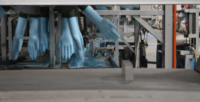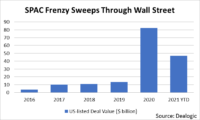The U.S. Food and Drug Administration (FDA) issued warning letters this month to two companies concerning the marketing and sale of over-the-counter (OTC) drug products containing cannabidiol (CBD) as an inactive ingredient. The letters allege violations of the Federal Food, Drug, and Cosmetic (FD&C) Act related to current good manufacturing practice requirements and marketing of new drugs without FDA approval.
At issue: labeling, NDAs and active ingredients
The companies subject to the warning letters market OTC drug products that contain CBD as an inactive ingredient. In the warning letters, the FDA states that it has not approved any OTC drugs containing CBD. According to the FDA, an approved new drug application (NDA) is required to legally market nonprescription or OTC drug products containing CBD, regardless of whether the CBD is an active or inactive ingredient. The FDA notes that CBD has known pharmacological effects and demonstrated risks, and that CBD has not been shown to be safe and suitable for use, even as an inactive ingredient. As a result, the FDA states that CBD cannot be marketed in OTC drug products.
 Further, the warning letters noted the marketing of several CBD products that highlighted the benefits of CBD for a range of conditions in such a manner that, according to the FDA, “misleadingly suggests that [their] . . . products are approved or endorsed by FDA in some way when this is not true.” The FDA also took issue with the way products were labeled, which included callouts on the front label regarding the CBD content of the product (a requirement under most state laws that permit CBD as an ingredient). Similarly, the FDA also noted that some of the products advertised CBD as an active ingredient in a topical pain reliever product. According to the FDA, no company may legally market such a product, since there are no OTC monographs or NDAs that allow the use of CBD in an OTC drug.
Further, the warning letters noted the marketing of several CBD products that highlighted the benefits of CBD for a range of conditions in such a manner that, according to the FDA, “misleadingly suggests that [their] . . . products are approved or endorsed by FDA in some way when this is not true.” The FDA also took issue with the way products were labeled, which included callouts on the front label regarding the CBD content of the product (a requirement under most state laws that permit CBD as an ingredient). Similarly, the FDA also noted that some of the products advertised CBD as an active ingredient in a topical pain reliever product. According to the FDA, no company may legally market such a product, since there are no OTC monographs or NDAs that allow the use of CBD in an OTC drug.
What this means for you
These warning letters highlight the FDA’s vigilance regarding OTC CBD products. Regardless of whether the CBD is labeled as an active or inactive ingredient, the FDA has taken the position that nonprescription CBD drugs are in violation of the FD&C Act. Companies marketing CBD products should be careful to ensure their marketing practices, as well as their product formulations, do not present a heightened risk of FDA enforcement.












